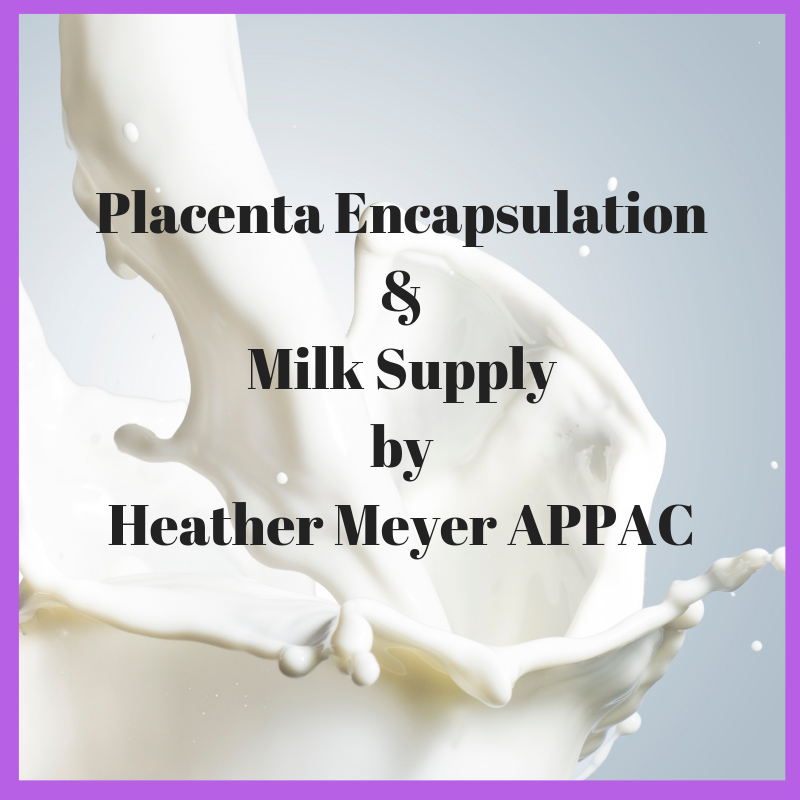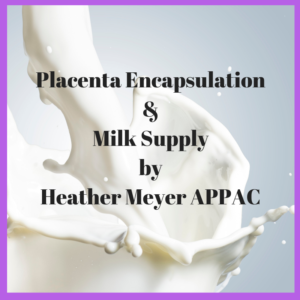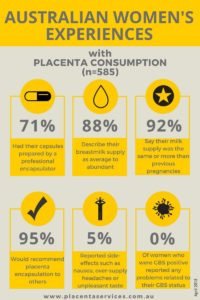Does Placenta Encapsulation Increase Milk Supply?

I’m doing a common questions blog series. I get many of the same questions and I think they deserve a great explanation instead of a little blurb in my FAQ or through email.
I would say “Does placenta encapsulation increase milk supply?” or “Does placenta encapsulation decrease milk supply?” is  the second most common questions I receive. The basic answer I give to that question is the majority of my clients report increased or the same milk supply and there are studies that do back that up. However, every person is different and there are exceptions to everything. So, let’s dive into this deeper.
the second most common questions I receive. The basic answer I give to that question is the majority of my clients report increased or the same milk supply and there are studies that do back that up. However, every person is different and there are exceptions to everything. So, let’s dive into this deeper.
What does the research say?
According to Johnson, Pastuschek, Markert and Gorton (2018), As a hormone that stimulates milk production and has anxiolytic and sedative effects, human placental lactogen could help improve postpartum well-being and be effective in case of insufficient lactation. They also make this note, a much higher concentration of human placental lactogen (hPL) is found in raw placenta, namely a mean value of 17.58 mg/g . A stimulatory effect on milk production and early onset of primary lactogenesis has been reported.
In a survey conducted by UNLV of 189 mothers, one of the reported benefits was improved lactation, decreased lactation was not a reported negative (Selander, Cantor, Young,
“Powdered Placenta Hominis was used for 57 cases of insufficient lactation. Within 4 days, 48 women had markedly increased milk production, with the remainder following suit over the next three days.” (Bensky/Gamble. 1997).
“All patients were given desiccated placenta prepared as previously described (C.A. II, 2492) in doses of 10 grains in a capsule 3 times a day. Only those mothers were chosen for the study whose parturition was normal and only the weights of those infants were recorded whose sole source of nourishment was mothers milk. The growth of 177 infants was studied. The rate of growth is increased by the ingestion of placenta by the mother… the maternal ingestion of dried placenta tissue so stimulates the tissues of the infants feeding on the milk produced during this time, that unit weight is able to add on greater increments of matter, from day to day, than can unit weight of infants feeding on milk from mothers not ingesting this substance.”(Hammett, Frederick. S. 1918).
This survey was among Australian women and was taken by an organization with interest but their experience still counts.
What about the blog post from the IBCLC warning against placenta encapsulation?
I have been asked by a few people about this. I do not want to discount anyone or their experience, however I think it’s important to point out that IBCLCs are seeing people who are having milk production problems, not the ones who are not. These people most likely would have had insufficient supply regardless of the encapsulation because the research just does not support that it decreases milk supply. Now, having said that I do think there are probably very rare instance that the placenta does affect supply in a negative manner because nothing is perfect. There is not one thing that works for every person. I could go into this more but I don’t want to rehash what someone else already as. I came across this post and I found it said almost everything I would. https://www.facebook.com/notes/melanie-belk/response-to-a-lactation-consultants-perspective-on-placenta-encapsulation/10156487518849179/
What do my clients report? What was my experience?
This is a direct quote from a client, “My milk is crazy pants again.” I had the same experience. The babies I didn’t encapsulate with I had a typical supply, the ones I did encapsulate with I had an oversupply. From the clients I hear from the majority have the same experience, either the same amount or more compared to a previous postpartum. I have had clients with milk supply issues but all of them were able to connect the issue to something else. When stopping the pills, it did not change their output so they resumed taking their encapsulation. I have had one client that had supply issues that were remedied when stopping the pills.
In closing, the choice always needs to be yours. Do your own research. Look at other peoples experiences. Sit with what you know and listen. You will know what choice to make.
RESOURCES:
Johnson, S. K., Pastuschek, J., Rödel, J., Markert, U. R., & Groten, T. (2018). Placenta – Worth Trying? Human Maternal Placentophagia: Possible Benefit and Potential Risks. Geburtshilfe Und Frauenheilkunde, 78(9), 846–852. http://doi.org/10.1055/a-0674-6275
Bensky/Gamble. 1997. Materia Medica, Eastland Press, 549.
Hammett, Frederick. S. 1918. The Journal of Biological Chemistry, 36. American Society of Biological Chemists, Rockefeller Institute for Medical Research, original press: Harvard University.
(2013) Human Maternal Placentophagy: A Survey of Self-Reported Motivations and Experiences Associated with Placenta Consumption, Ecology of Food and Nutrition, 52:2, 93-115, DOI: 10.1080/03670244.2012.719356

